| Making flint tools
today
Only a century or so ago, little was
known about how our early ancestors made flint implements.
Stone tools were widely considered a simplistic technology, popularly associated with low intelligence and
crude abilities. Thanks to intensive practical experiments
and decades of archaeological investigation we are now in a
position to recreate all types of stone tools ourselves. In
learning how to recreate flint tools, we have also learnt to
appreciate how intelligent and dexterous early humans were.
Making something as complex as a hand axe requires a chain of
operations, each knapping phase depending for success on the
previous operation in the chain - thus requiring considerable
forethought and planning. In addition, when knapping a hand axe,
the maker is always working in reverse - striking the platform
edge of side A, to remove flakes from side B which is concealed.
The art of flint knapping has been re-kindled in both Britain
and the United States and today it is possible to make close
replicas of all the tools illustrated on this site. Flint-knapping
courses are provided by a number of individuals and organisations.
One of Britain's first attempts to relive the ancient past is
Butser Ancient Farm in Hampshire, site of a recreation of an Iron
Age settlement and ancient technologies, including working flint.
The flintknapping leader at Butser is Bob Turner of Sussex
University.
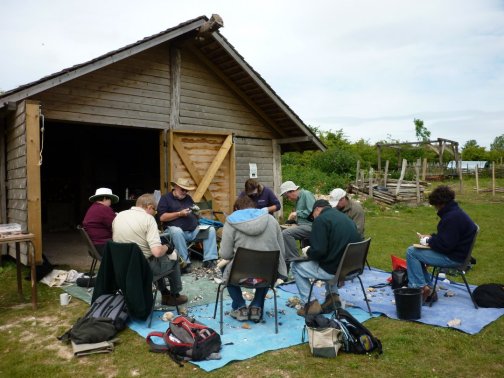
Cro-Magnon humans flintknapping at Butser Ancient Farm in
Hampshire, led by Sussex University's Bob Turner (third from
left). Debitage is carefully collected on plastic sheets and
deposited where it will not confuse archaeologists of the future.
|
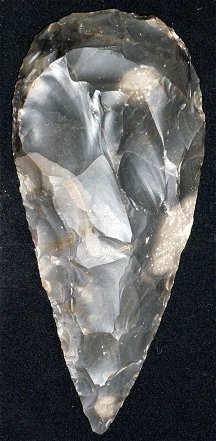
A flint hand axe knapped by Bob Turner.
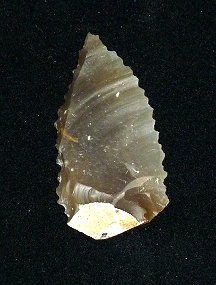
A scraper knapped
by Catherine Billam.
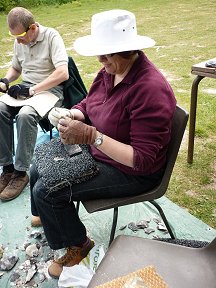
Catherine Billam uses pressure flaking to retouch the edge of a
modern flint flake.
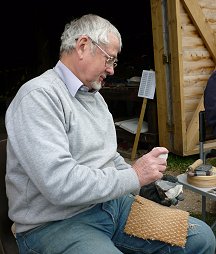
Stone Age Tools Museum webmaster Richard Milton removes flakes
from a flint core
|